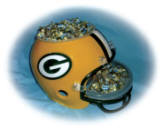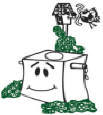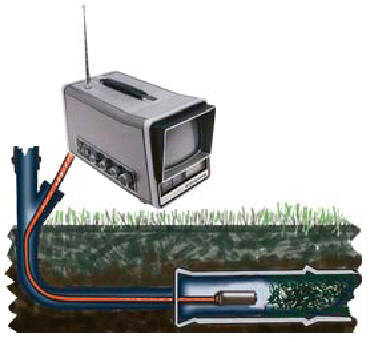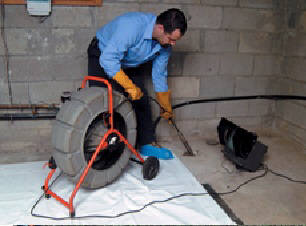



Bio - Products, Packaging & Marketing Experts



Diagnosing Tree Root Problems in Septic Systems & Drain lines
Tree roots can cause many problems in your septic system. Some roots can travel up to several hundred feet in search of moisture and nutrients. Tree roots are one of the hardest things to diagnose. Your septic system is not like a car with a warning light on it, if your system gets root bound it will just stop working. Maintaining your system is vital to its operation. If you do not take care of it, you are in for future headaches and costly septic system repairs or even a septic system replacement.
Most septic tanks are concrete structures that come in several pieces.
1. The tank itself is four walls with a bottom on it.
2. The tank top is a concrete slab with two man holes in it and inspection pipes.
3. There are two risers with concrete caps to cover the man holes.


Tanks are generally buried about two feet below the ground surface. Most new systems installed today have cement risers installed to bring the caps to the surface. Any place there are two surfaces meeting each other there is potential for tree roots in the septic to get into your system.
Roots in septic tank are normally from the roots growing in under the cement tank top. If the seal between the cement tank top and the tank itself is broken then roots can find the smallest hole and work their way into the tank. Once they find the water they are searching for they continue to grow fast, twisting and twining themselves into a ball.
Some roots in septic system have been known to grow up to several hundred pounds. These root balls are very difficult to remove. Any septic professional can tell you a story or two of how they have discovered and removed very large roots from a septic system.
This is another reason why it is important to have your septic tank pumped on a regular basis. Your cleaning professional can tell you if you are having any problems before they become major issues.


There are only a few ways to handle root problems in septic tanks, remove and repair where they are entering or cut the roots out and do a root treatment with a high quality product provided by your professional contractor.
Ask your professional for for Lenyzme Root Control (compared to RootX) which has twice the killing power and a unique latex base to hold onto the roots longer for a better longer lasting treatment.

Drainfield Root Problems:
Septic systems provide the perfect source for roots in your drain field lines. Once a root finds the drainfield it will continue to grow tiny feeder hairs. These tiny feeder hairs are what supply the plants or trees with their water. They will continue to multiply and start intertwining themselves. They will become so tightly woven that they will stop the effluent water from traveling down the drain field lines (or at the very least, greatly slow it down).
To diagnose tree roots in a septic system you will need a contractor that uses an inspection camera. This works by the contractor sending a small camera down the lines to see what is in each drain line. If roots are determined to be the problem then there are several courses of action that you can take. Plant roots can be removed by mechanical methods, high pressure jetting or by using a Root Control product.
The last option is complete replacement of the drainfield lines. One thing to understand about roots are; using mechanical or pressure jetting this will be a short term fix. Once roots are cut they will grow back twice as fast and twice as hardy. Therefor, it is highly recommended with this type of removal to use a Root Control treatment. The treatment will stop the roots from actively growing back for up to one year. Treatments should be done annually thereafter.
Your contractor and you can determine the right course of action based on how bad the roots are in your system and how much you want to disturb your landscaping. Once your drain field roots are removed or treated then removing the source of the roots is highly recommended.
Drainline Root Problems:
Where ever there are plants, trees and drain lines there are potential problems. Roots searching for water will find the smallest hole or leak in the line. Any where there is a joint in the line is a potential problem. Once there, they will attack the water source.
First by getting a feeder root into the pipe line and then multiplying rapidly. Filling the drain line up with tiny hair like roots. The hair like roots will combine together and eventually the flow in the drain line will come to a stop.
The lowest cost solution of removal is to mechanically remove them and treat with a Root Control.

The treatment will stop the roots from actively growing back. Treatments should be done annually thereafter. The other solution is to replace the pipe line. Once your drain line is free of roots we recommend removing the source of the roots. Contact your local professional for this type of work.
As you can see roots are a very big problem in any septic system, drain field line or drain line. Roots need to be addressed immediately or they will cause bigger problems. Removing roots should be done by a professional as using root removing equipment can be dangerous. Performing a Root Control treatment should be done by a professional at the time of removal.